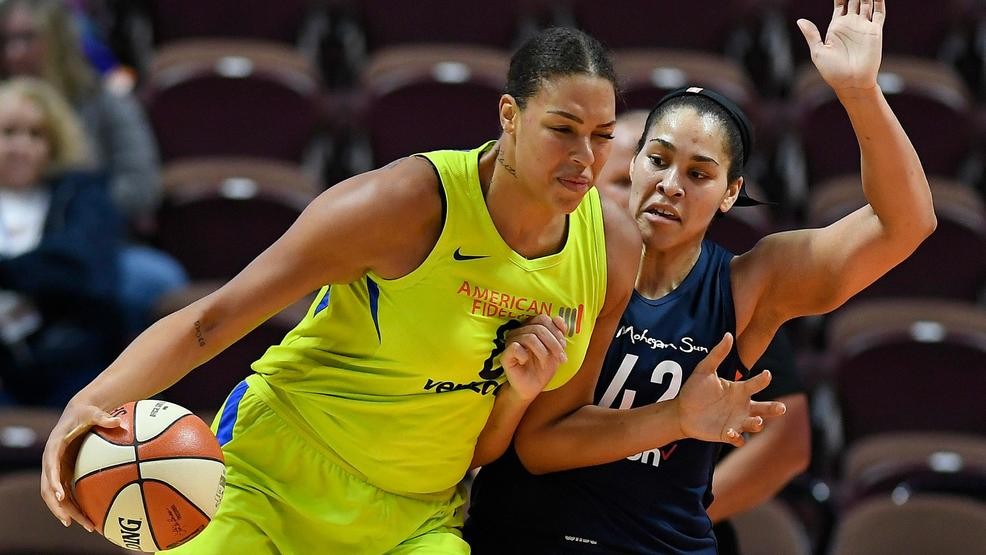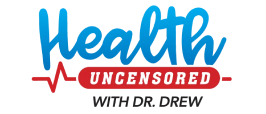Women are entitled to equal pay for equal work. The premise is so simple, yet to this day we see brazen pay disparities between men and women in athletics. This unequal treatment is baked into contracted pay structures, reflected in major organizations’ commitments to promoting men’s sports but not women’s, and solidified by the investments that these organizations are willing to make into the facilities that players get to train and play in. It’s something that athletes in women’s sports have been calling out for years — and thanks to their persistence, they’ve finally been able to bring these issues to the attention of their fans all around the world. Their dedication to demanding what’s right — equal pay for equal work — is utterly inspiring, spilling out beyond the bounds of professional sports.
Whether through boycotts, litigation, or being unapologetically vocal about their demands, our favorite athletes are making us proud on and off the field. Here’s how the pursuit of equal pay is currently shaping up for three different major American sports:
Soccer

The most visible demand for equal pay is, of course, in women’s soccer.
Mediation recently ended on a sour note between the US Women’s National Soccer Team and US Soccer. The suit will be settled in court next year. A spokesperson for the players released a statement indicating that the plaintiffs were “sorely disappointed in the Federation’s determination to perpetuate fundamentally discriminatory workplace conditions and behavior,” singling out the Board of Directors as well as the president, Carlos Cordeiro. “We want all of our fans, sponsors, peers around the world, and women everywhere to know we are undaunted and will eagerly look forward to a jury trial.”
US Soccer responded defensively, describing the plaintiffs’ contributions to the mediation as inconsiderate and “aggressive,” which reads as a sort of red flag; women who are willing to voice strong opinions and stand their ground are all too often described as such. Not to editorialize too much, but US Soccer also cited the fact that the women’s team receives the best compensation in the world, compared to other women’s teams… which honestly doesn’t say much, considering how little money and support goes to teams elsewhere on the globe.
Alex Morgan told NPR last week that having the court case hanging over the team during their season isn’t a concern. “I don’t think we know soccer without distraction,” she said. “We feel like we have always been fighting for a seat at the table and we have always fought for everything that we’ve earned, so having the case be pushed up to May I think is good overall.” She emphasized that a victory in court is a win that will be bigger than them. “Who’s going to reap the benefits is that next generation. So I think those young girls and that next generation should feel confident that they’re in good hands and that we are setting up this structure and this compensation and this true equality for them.”
Players in the National Women’s Soccer League face unequal pay as well, compared to their peers who play in Major League Soccer. According to figures from SB Nation, at a minimum, players in the MLS make a $60,000 salary each year, while players in the NWSL make as little as $16,538; the highest paid women’s player can make $46,2000 at most. This will likely change regardless of whether the USWNT wins their suit, as they’ve raised the stakes regardless for other entities to pursue equal pay and support.
In the meantime, corporations are stepping in to help bridge the pay gap. “This is the best league in the world,” Steve Baldwin, the owner of the Washington Spirit, told the Washington Post. “We have to change how we sell it, promote and market it. I believe the opportunity is there to where unequal pay is achieved and the women make more.” Baldwin has been focused on bringing in more sponsorship revenue to help support the league, suggesting that the NWSL could pull in $30 to $50 million on an annual basis if they can strike while the iron is hot. “We have to sell that competitive advantage to drive that revenue to those types of levels,” he explained. “I think this is the best shape the league has ever been in, and I can’t imagine a corporation having a better opportunity to unleash fabulous female role models in a bigger way than what we have.”
Hockey

Before the US Women’s National Soccer Team raised the alarm for equal pay on the field, the US Women’s National Hockey Team was calling for equal pay on the ice.
In March of 2017, only weeks before the year’s World Championships was set to begin, the US women’s team threatened to boycott the tournament unless they were able to secure a living wage from USA Hockey — $71,000 per player on the national team — among other demands. The negotiations were settled in part because the NHL kicked in funds to help their female colleagues to reach that figure prior to the start of the tournament.
The US Women’s National Hockey Team punctuated their victory in negotiating equal pay, taking home the gold at the 2018 Pyeongchang Olympics. The team has since gotten more visibility in the media, but top players still feel that USA Hockey is failing to promote the team equally. “People are drooling for women’s hockey,” star forward Kendall Coyne Schofield told the New York Times last year. “But the product we deliver isn’t being shown. There’s been a lot of lost opportunities, a lot of opportunities that haven’t been capitalized on.” USA Hockey has not pursued media opportunities to celebrate or promote the team through media projects; in fact, the team doesn’t even have its own social media channel, despite the players’ requests.
While the national team’s players have been able to successfully leverage their talents and unity to get equal pay, the players within the National Women’s Hockey League get paid a measly salary that is anywhere between $3,000 and $10,000, which is less than what they had been receiving when the league was established a few years ago. Anya Battaglino, the head of the Players’ Association told the Times that none of the league’s players are able to live off their hockey earnings. “Women’s hockey players deserve the respect to be able to say, I am a professional athlete, proudly,” she said. “Currently our athletes say, ‘I am a blank and on the nights and weekends I get to play professional hockey.’”
Hilary Knight, who had played in the CWHL and is also on the US national team, recently spoke to Sports Pro Media, explaining that 200 elite players have agreed not to play in the NWHL this season — herself and Coyne Schofield included — because they are looking to the NWHL for a commitment to growth. “If you pull back the curtain it’s really bare bones, and yes [the league] gave us a place to play and we’re grateful for that, but there wasn’t a grander vision to grow and there was no growth model,” she explained. “You think about how [NHL players] are able to wake up, go out there and do the sport that they love and it’s become their job, I think that’s something we aim to replicate.” She acknowledged that achieving equal pay isn’t going to happen right now and will take many years. “[But] that’s something that we want to grow.”
Basketball

Cathy Engelbert joined the WNBA earlier this year as its commissioner, inheriting a daunting set of tasks that include negotiating fair pay for the league’s players as well as ensuring the league can sustain itself financially.
This will be a big year for the WNBA, as it will be much more visible to the public throughout its regular season — between CBS Sports and ESPN, fans will have access to dozens of regular season games — and will benefit from a new marquee sponsorship from AT&T. You can even find some of their players in NBA2K this year. “We’ve done a full rebrand,” the league’s Chief Operating Officer Christy Hedgpeth told the Washington Post. “We wanted something more edgy, something more modern, and I think both fans and the media have responded to that. We want to tell stories about our players — their fashion, their musical and political interests.”
Engelbert spoke with Sports Illustrated earlier this summer and shared a similar outlook, embracing the idea that her players will be able to connect with a socially conscious fan base, sharing their own life stories and goals from a new WNBA platform. Engelbert elaborated upon her grander vision in supporting her players. “I loved the outcome on the women’s [World Cup] and would love to capitalize on the momentum that creates for women in sports because that then creates a narrative around future leaders, whether it’s in business or government or academia.”
According to a figure cited by USA Today, the players currently receive less than a quarter of the revenue that the league generates; the players in the men’s league receive a 50-50 split. This is something that will no doubt change in the next Collective Bargaining Agreement. Prior to this year’s All-Star game, the WNBA and the Women’s National Basketball Players Association issued a joint statement that indicated positive headway in this goal, a negotiation that will lead to better training conditions in addition to more equitable compensation. “We are encouraged by the discussions and look forward to additional meetings in the near future.”
National players are also seeing an influx of support from USA Basketball. Leading up to the 2020 Olympics, USA Basketball announced over the summer that many of the Women’s National Team players — including Sue Bird and Diana Taurasi — are set to participate in a new training program in the off-season. Beginning in November and continuing through to April 2020, the training camp will offer participating players a guaranteed pay and continued exposure in the media prior to the Olympics. “I’m very excited about this program,” Bird said in a press release. “It’s the right amount of training so we can gear up and get ready for the Olympics, and also it gives us the right amount of exposure where we can really create some momentum heading into the Olympics. It’s not only about trying to win another gold medal, it’s about trying to win our seventh in a row, that’s the story.”
Taurasi explained that while the training program was the result of a players’ brainstorm, Jim Tooley and Carol Callan — the CEO of USA Basketball and the Women’s National Team Director, respectively — were totally on board. “I think they were actually more excited about the idea than we were,” she added. “It’s just something that came together literally at dinner on a piece of paper with some crayons.”
What You Can Do
Fans do not have the power to dictate whether all athletes get equal work for equal pay from their organizations. Having effective legislation in place to support equitable standards helps, but even legislation can be up to interpretation — so much so that two parties can end up putting themselves through time-consuming and expensive litigation in order to fight for what they each believe is outlined by the law. Ultimately, the people who head up the leagues and organizations are the ones who have the most say in whether to pay all of their athletes what they deserve.
However, spectator sports rely upon spectators to remain profitable, and that means you have the power to make your voice heard with your dollar. Help athletes demand equal pay by coming through as dedicated fans. Sport the jerseys of your favorite players and fill up the stadiums for league games — even during the regular seasons. Celebrate your local and national teams in ways that are visible to corporate sponsors, the media, and to the heads of the sports organizations themselves. Support youth leagues in your communities. There are always going to be mansplainers along the way who cling to their tired justifications for why women don’t deserve as much money as their male counterparts, but the opinions that matter are the ones at the top — and the revenue that they see from an energized fan base speaks way louder than misogyny.
For Image credit or remove please email for immediate removal - info@belatina.com




































